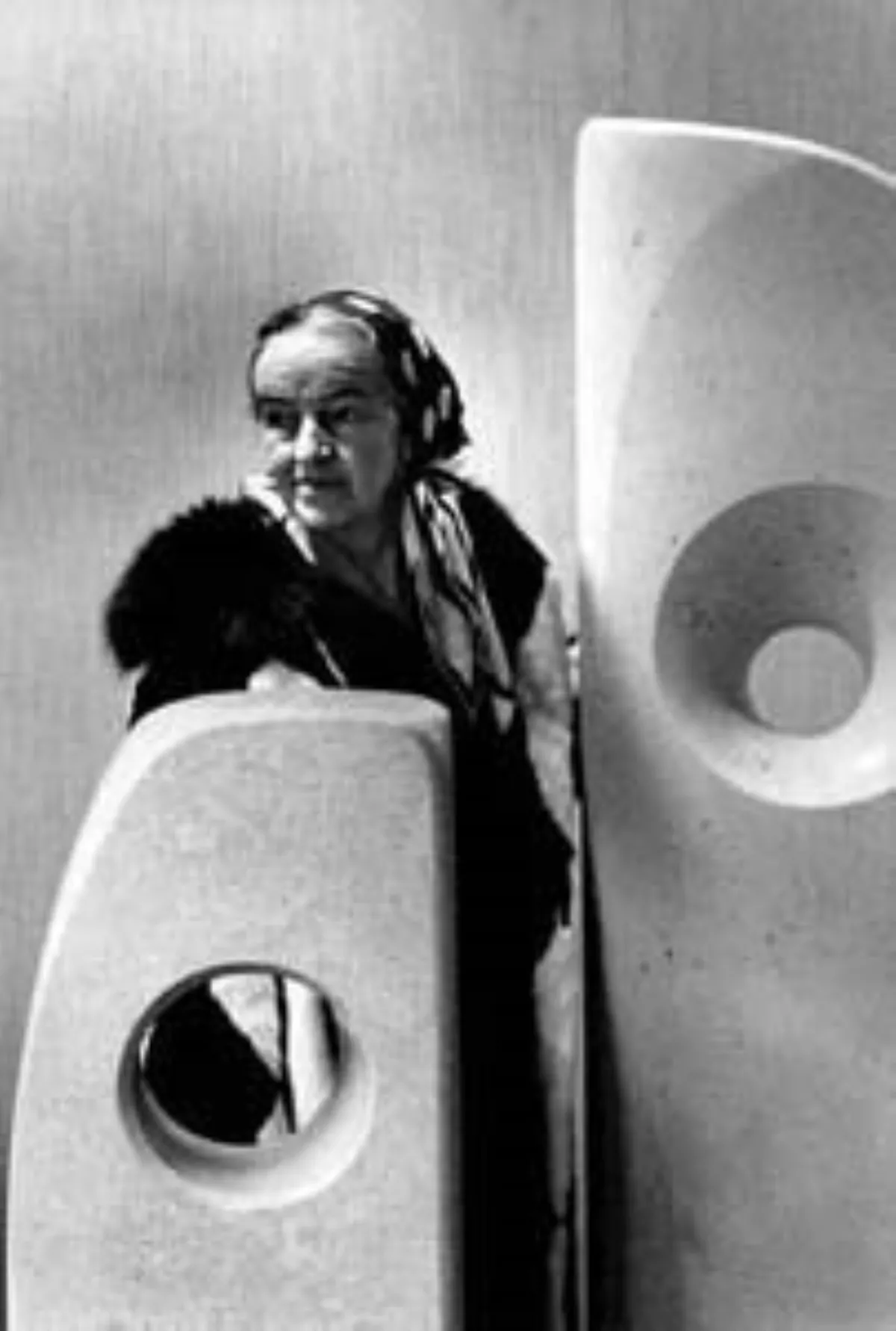 1.
1. Dame Jocelyn Barbara Hepworth was an English artist and sculptor.

 1.
1. Dame Jocelyn Barbara Hepworth was an English artist and sculptor.
Barbara Hepworth died in a fire at her studio in 1975.
Jocelyn Barbara Hepworth was born on 10 January 1903 in Wakefield, West Riding of Yorkshire, the eldest child of Gertrude and Herbert Hepworth.
Barbara Hepworth's father was a civil engineer for the West Riding County Council, who in 1921 advanced to the role of county surveyor.
Barbara Hepworth attended Wakefield Girls' High School, where she was awarded music prizes at the age of 12 and won a scholarship to study at the Leeds School of Art from 1920.
Barbara Hepworth was the runner-up for the Prix-de-Rome, which the sculptor John Skeaping won.
Barbara Hepworth and Skeaping returned to London in 1926, where they exhibited their works together from their flat.
In 1931, Barbara Hepworth met and fell in love with abstract painter Ben Nicholson; however, both were still married at the time.
Barbara Hepworth filed for divorce from Skeaping that year; they were divorced in March 1933.
In 1931, Barbara Hepworth was the first to sculpt the pierced figures that are characteristic of both her own work and, later, that of Henry Moore.
In 1933, Barbara Hepworth travelled with Nicholson to France, where they visited the studios of Jean Arp, Pablo Picasso, and Constantin Brancusi.
Barbara Hepworth later became involved with the Paris-based art movement, Abstraction-Creation.
In 1933, Barbara Hepworth co-founded the Unit One art movement with Nicholson and Paul Nash, the critic Herbert Read, and the architect Wells Coates.
Barbara Hepworth helped raise awareness of continental artists amongst the British public.
Barbara Hepworth, atypically, found a way to both take care of her children and continue producing her art.
Barbara Hepworth lived in Trewyn Studios in St Ives from 1949 until her death in 1975.
In 1950, works by Barbara Hepworth were exhibited in the British Pavilion at the XXV Venice Biennale alongside works by Matthew Smith and John Constable.
Barbara Hepworth moved away from working only in stone or wood and began to work with bronze and clay.
Barbara Hepworth often used her garden in St Ives, which she designed with her friend the composer Priaulx Rainier, to view her large-scale bronzes.
Exhausted, in part from her son's death, Barbara Hepworth travelled to Greece with her friend Margaret Gardiner in August 1954.
When Barbara Hepworth returned to St Ives from Greece in August 1954 she found that Gardiner had sent her a large shipment of Nigerian guarea hardwood.
Between 1954 and 1956 Barbara Hepworth sculpted six pieces out of guarea wood, many of which were inspired by her trip to Greece, such as Corinthos and Curved Form.
When Martha Jackson failed to arrange the solo American exhibition of sculptures and drawings that Barbara Hepworth demanded, Barbara Hepworth moved, in 1957, to Galerie Chalette, run by Arthur and Madeleine Lejwa, known for their close relationship with Jean Arp, and dedication to close relationships with their artists.
Barbara Hepworth came to New York for the opening, but made minimal contact with the press and left as soon as possible.
Barbara Hepworth greatly increased her studio space in 1960 when she purchased the Palais de Danse, a former cinema and dance hall, that was situated across the street from Trewyn.
Barbara Hepworth used this new space to work on large-scale commissions.
Barbara Hepworth experimented with lithography in her late career, and produced two lithographic suites with the Curwen Gallery and its director Stanley Jones, one in 1969 and one in 1971.
Barbara Hepworth died in an accidental fire at her Trewyn studios on 20 May 1975 at the age of 72.
In 1951 Barbara Hepworth was commissioned by the Arts Council to create a piece for the Festival of Britain.
Barbara Hepworth was awarded the Grand Prix at the 1959 Sao Paulo Art Biennial.
Barbara Hepworth was awarded the Freedom of St Ives in 1968 as an acknowledgment of her significant contributions to the town; she was a member of the St Ives Trust, a founder member of the 'Art in Schools' programme run by Cornwall County Council, and had gifted several sculptures to the town.
Barbara Hepworth was awarded honorary degrees from the universities of Birmingham, Leeds, Exeter, Oxford, London and Manchester.
Barbara Hepworth was appointed CBE in 1958 and DBE in 1965.
In 2011 The Barbara Hepworth Wakefield opened in Barbara Hepworth's hometown of Wakefield, England.
Barbara Hepworth's work was included in the 2021 exhibition Women in Abstraction at the Centre Pompidou.
Barbara Hepworth's work had a wide influence on Australian sculpture.